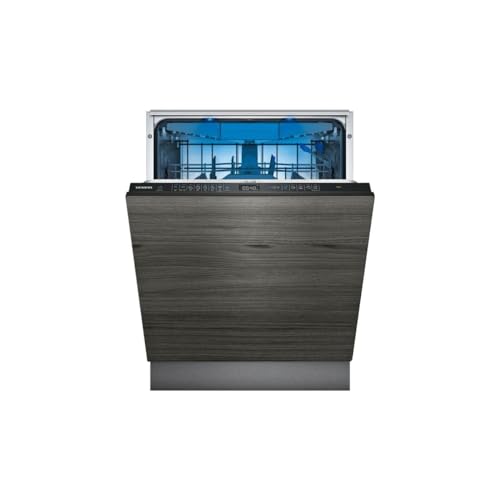
Have you ever wondered what makes soda crystals so effective at tackling tough stains and grime? This article will delve into the ingredients used to create this versatile cleaning agent, providing you with all the information you need to know.
Soda crystals, also known as washing soda or sodium carbonate, are composed of carbon, oxygen, sodium, and hydrogen atoms. The chemical formula for soda crystals is Na2CO3. This powerful compound is highly soluble in water, making it an ideal cleaning agent.
The main ingredient in soda crystals, sodium carbonate, is obtained from the heating and processing of soda ash. Soda ash, also known as sodium carbonate decahydrate, is derived from natural sources such as trona ore or salt brine. It is then further processed to remove any impurities and create the white, crystalline substance known as soda crystals.
Because of its alkaline nature, soda crystals have a wide range of cleaning uses. They are particularly effective at cutting through grease and removing stubborn stains. Whether you need to clean your oven, unclog a drain, or remove limescale from your bathroom, soda crystals can do the job.
In conclusion, soda crystals are a powerful cleaning agent made from sodium carbonate. Their versatility and effectiveness make them a staple in many households. Whether you’re tackling tough stains or simply want to freshen up your home, soda crystals are a reliable choice.
What Are Soda Crystals?
Soda crystals, also known as washing soda or sodium carbonate decahydrate, are white crystalline substances that are commonly used in household cleaning and laundry applications.
These versatile crystals are highly soluble in water and have a wide range of cleaning properties. They are often used as a detergent or cleaning agent due to their ability to dissolve grease, remove stains, and neutralize odors.
Soda crystals have been used for many years as a traditional cleaning product, and their effectiveness has stood the test of time. They are gentle enough to be used on a variety of surfaces, including fabrics, glass, tiles, and metals, without causing damage.
The Chemical Composition of Soda Crystals
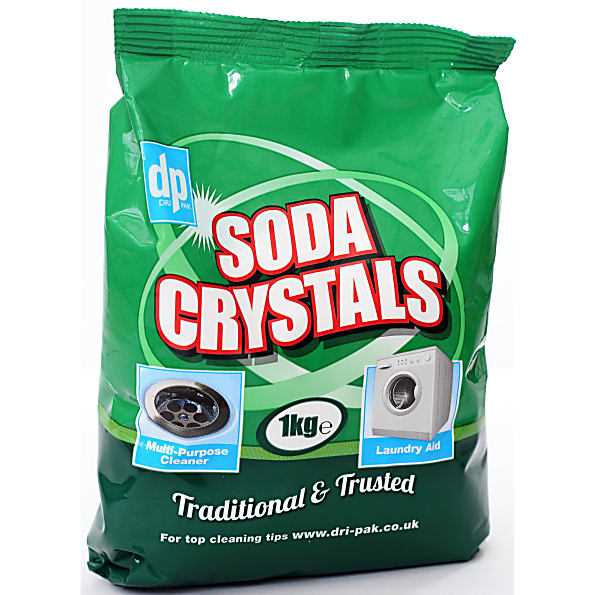
The chemical formula for soda crystals is Na2CO3·10H2O, which means each molecule of soda crystals is composed of two sodium (Na) atoms, one carbon (C) atom, three oxygen (O) atoms, and ten water (H2O) molecules.
This chemical composition gives soda crystals their cleaning properties. The sodium carbonate component acts as a pH regulator and helps to dissolve grease and dirt. The water molecules help to make soda crystals soluble in water, allowing them to mix effectively with other cleaning agents.
Uses of Soda Crystals

Soda crystals have various uses in cleaning and household applications. Some common uses include:
- Removing stains from clothes and fabrics
- Unclogging drains and sinks
- Cleaning ovens and BBQ grills
- Removing limescale from bathroom fixtures
- Preventing limescale buildup in washing machines and dishwashers
- Deodorizing carpets and upholstery
- Cleaning outdoor surfaces such as patios and decking
How to Use Soda Crystals
Soda crystals are generally used by dissolving them in water to create a cleaning solution. The concentration of the solution can vary depending on the cleaning task.
For most cleaning applications, a solution of 50-100 grams of soda crystals per liter of water is sufficient. However, for tougher tasks such as unclogging drains, a more concentrated solution may be required.
Once the solution is prepared, it can be used directly on the surface to be cleaned or applied with a cloth or sponge. After cleaning, the surface should be rinsed with clean water to remove any residue.
It is important to follow the instructions on the packaging and take necessary safety precautions when using soda crystals, as they can be irritating to the skin and eyes.
| Precautions | Recommendations |
|---|---|
| Wear gloves | Protect your skin from direct contact with soda crystals by wearing rubber gloves. |
| Avoid contact with eyes | Keep soda crystals away from your eyes and wash your hands thoroughly after use. |
| Store safely | Keep soda crystals out of reach of children and store them in a cool, dry place. |
| Follow instructions | Read and follow the instructions on the packaging for the specific application. |
Common Ingredients
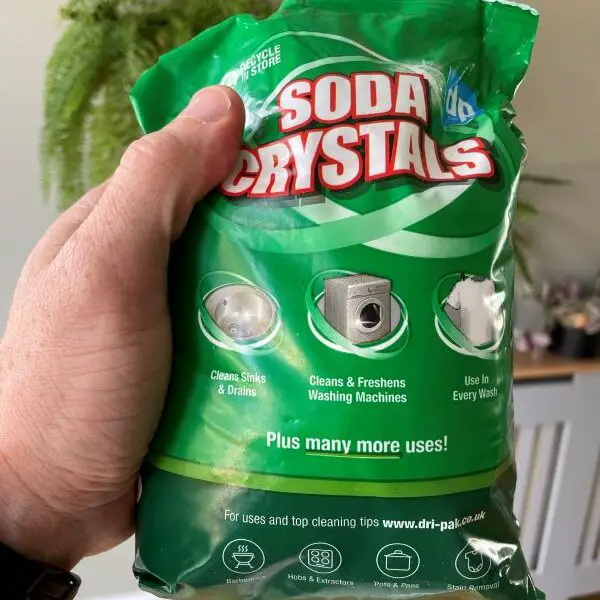
Soda crystals, also known as washing soda or sodium carbonate, are a versatile cleaning agent that can be used for various purposes. It is made from common ingredients that are readily available.
Sodium Carbonate – The main ingredient in soda crystals is sodium carbonate. It is a white, crystalline powder that is highly alkaline and has strong cleaning properties. Sodium carbonate is capable of breaking down grease, removing stains, and deodorizing surfaces.
Water – Water is required in the manufacturing process of soda crystals. It is used to dissolve the sodium carbonate and create a solution that can be further processed.
Carbon Dioxide – In the production of soda crystals, carbon dioxide is released as a by-product. It is a naturally occurring gas that is a normal part of the earth’s atmosphere.
Salt – Salt is often added to soda crystals to improve their cleaning power. It acts as an abrasive agent and helps to remove stubborn stains and dirt.
Other Additives – Some manufacturers may add other ingredients to soda crystals to enhance their cleaning capabilities or provide additional benefits. These additives can include fragrances, enzymes, or other cleaning agents that target specific types of dirt or stains.
It’s important to note that while soda crystals are generally safe to use for cleaning purposes, they should be handled with care. It is advisable to wear gloves and avoid contact with eyes or skin, as sodium carbonate can cause irritation.
Chemical Composition
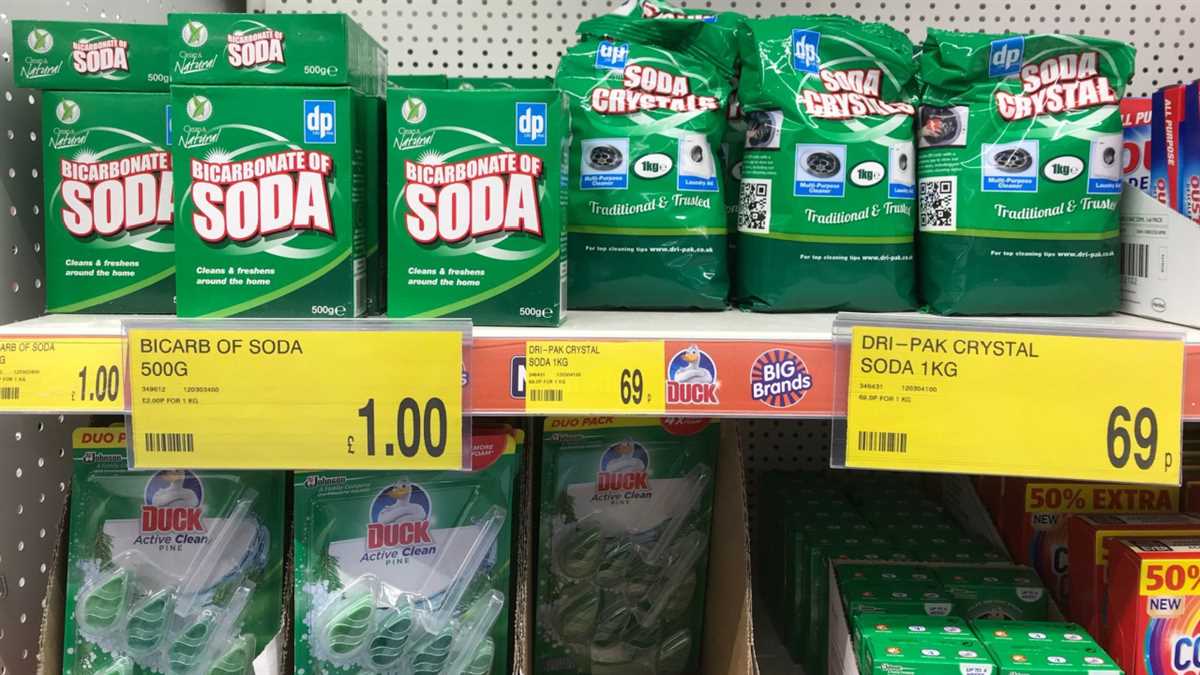
Soda crystals, also known as sodium carbonate decahydrate, have a chemical formula of Na2CO3 • 10H2O. This means that each molecule of soda crystals contains two sodium atoms (Na), one carbon atom (C), three oxygen atoms (O), and ten water molecules (H2O).
The presence of water molecules in the chemical formula is what differentiates soda crystals from pure sodium carbonate (Na2CO3). The water molecules are crucial to the physical properties and uses of soda crystals.
Soda crystals can also be called washing soda or soda ash. However, these terms are often used interchangeably to refer to sodium carbonate anhydrous (without water). While both sodium carbonate decahydrate and sodium carbonate anhydrous are useful in various applications, they have slightly different properties and uses.
Sodium carbonate decahydrate is a white, crystalline substance with a high alkalinity. It is soluble in water and has a pH level of around 11, making it a strong base. The alkaline nature of soda crystals contributes to their effectiveness in cleaning and degreasing tasks.
In addition to its cleaning properties, soda crystals also have mild disinfectant properties. They can help kill bacteria and fungi present on surfaces, making them a versatile household cleaning agent.
Soda crystals are versatile and have many practical uses around the house. From removing grease stains and unclogging drains to cleaning dishwashers and refreshing laundry, soda crystals are a staple in many households.
Manufacturing Process
Soda crystals, also known as washing soda or sodium carbonate, are a versatile household cleaning and laundry product. Here is a step-by-step guide on how soda crystals are manufactured:
1. Sourcing Raw Materials
The main ingredient used in the manufacturing of soda crystals is common salt, also known as sodium chloride. This salt is sourced from natural deposits or obtained through the evaporation of seawater or brine.
2. Purification of Sodium Chloride

After sourcing the raw salt, it undergoes a purification process to remove impurities such as calcium, magnesium, and other minerals. This is done through various methods like filtration, crystallization, and ion exchange.
3. Solvay Process
Once the sodium chloride is purified, it is combined with limestone (calcium carbonate) and ammonia in a process known as the Solvay process. This process involves several chemical reactions and results in the production of soda ash (sodium carbonate) and calcium chloride.
4. Production of Soda Crystals
The soda ash produced in the Solvay process is then further processed to obtain soda crystals. This is achieved through a crystallization process, where the soda ash is dissolved in water and then crystallized. The crystals are then separated, washed, and dried to obtain pure soda crystals.
5. Packaging and Distribution
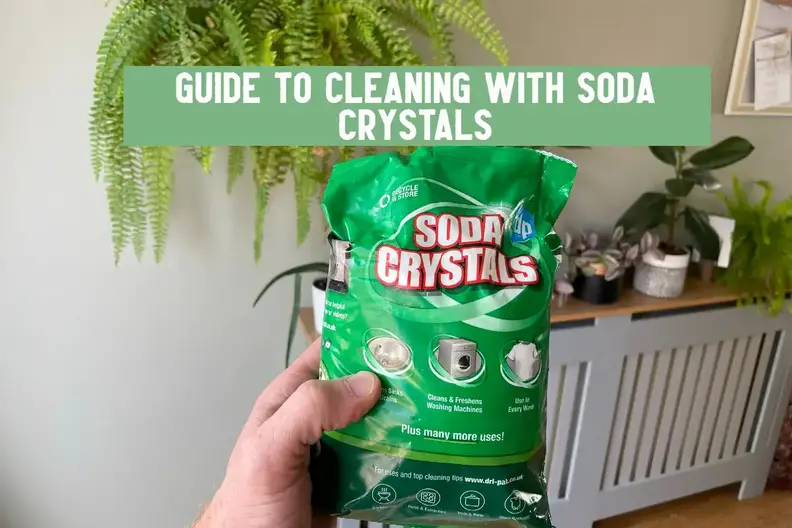
After the soda crystals are dried, they are packaged into various sizes and formats like bulk bags, smaller packs, or tablets. The packaged soda crystals are then distributed to retailers, supermarkets, and online stores for consumer use.
Soda crystals are an effective cleaning agent thanks to their alkaline nature, making them useful in a wide range of cleaning applications such as removing grease, stains, and limescale. They can be used for cleaning fabrics, surfaces, kitchen appliances, and even as a laundry detergent booster.
FAQ
What are soda crystals?
Soda crystals, also known as sodium carbonate, are white, crystalline solid particles that are highly soluble in water. They are commonly used for cleaning, stain removal, and laundry purposes.
Where can I buy soda crystals?
Soda crystals are readily available in many supermarkets, grocery stores, and online marketplaces. You can also find them in hardware stores and household cleaning sections of various retail outlets.
What are the main uses of soda crystals?
Soda crystals have multiple uses. They can be used as a cleaning agent for various household surfaces, as a laundry detergent booster, as a drain cleaner, and even for removing moss and algae from outdoor surfaces.
Are soda crystals safe to use?
When used as directed, soda crystals are generally safe to use. However, like any cleaning product, it is important to read and follow the instructions and safety guidelines provided on the packaging. It is also recommended to wear gloves and protective eyewear when handling the crystals.
Can soda crystals damage certain surfaces?
Soda crystals can be abrasive, so it is important to check compatibility with the surface before use. They may cause damage to delicate materials such as polished marble or some types of plastics. It is always best to test a small, inconspicuous area before applying soda crystals to a larger surface.
Can soda crystals be used in dishwashers?
No, soda crystals should not be used in dishwashers. They can cause damage to the rubber seals and other components of the dishwasher. It is recommended to use dishwasher-specific detergents and follow the manufacturer’s instructions for optimal results.










